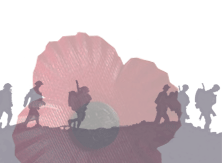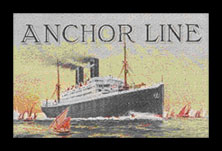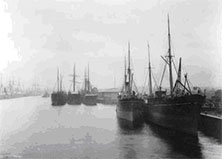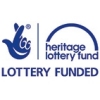The Hamet Family
Their names will be remembered for evermoreBy 1914, Glasgow, long known as the second city of the British Empire, had welcomed nationalities from across the world. As the industrial and trading powerhouse of the empire, it was a magnet for thousands under British rule. Several Glasgow-based shipping companies like the Anchor Line, Clan and City Lines made extensive use of lascar labourers, who were cheaper to employ than Europeans. Lascars was the collective name given to predominantly Asian seamen taken on as deckhands and engine room crew by British merchant ships in the 19th and 20th centuries. Many single men married white British women, forming the earliest immigrant communities in the thriving port cities of the UK, including Glasgow. The Hamet family came from Egypt, unofficially occupied and administered by Britain, which wanted to protect the Suez Canal, its principal and most direct route to British-ruled India. Possibly to escape the unrest in Cairo or simply to give his family a better life, Hassan Hamet brought his family to Glasgow. Hassan had four sons, Hamed and Ali, who were born in Suez, and Alexander and Hassan, born in Glasgow while their father was working as a steamship fireman. Answering the Call When war came, the Hamets answered the call to protect the empire and their home. In 1915, both Alexander, an engineer, and Hassan and their children were living in tenements in Elderpark Street, Govan. Their brother Hamed, in his forties and beyond enlistment age, was working as a plumber in Coatbridge. Elderpark Street has since been dubbed Glasgow's Own United Nations because of the multiple nationalities living there, but it was home to diverse groups even a century ago. Ali, who was a brass finisher, disappears from records before the war. It's likely Alexander was in a reserved occupation in ship building or munitions but Hassan joined The Cameronians (Scottish Rifles) in June 1917. It's likely he saw action in the Battles of Menin Road and Polygon Wood in September 1917, the third battle of Ypres and also the Battle of Hazebrouck. He would have seen some of the fiercest fighting on the Western Front. Services Rendered Hassan was honourably discharged because of illness in August 1918, from the 4th Battalion, which had returned to Scotland and was guarding ports on the Forth. Hassan applied for the Silver War Badge, which bore the inscription Services Rendered and identified the wearer as having been on active service abroad. Each badge was uniquely numbered on the reverse. The War Office made it known that it would not replace Silver War Badges if they went missing, however if one was handed into a police station, then it would be returned to the War Office. If the original recipient could be traced at his or her discharge address, then the badge would be returned. View original referenced text here: |
Images:
|














